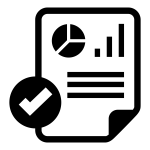From research to infographics
As visualisation becomes the best way to get attention, being able to turn complex academic work (research, school projects, dissertations) into infographics is becoming a valuable skill.
 Yet, demystifying the content of heavy academic work is a tough task. As authors, we are immersed into our work, which took us months or years to craft, get out there and, ultimately, in the best cases, publish. Once the whole hassle of fighting for this article (collecting data, writing up, submitting, revising, answering comments, editing, etc.) is over, all you want to do is relax and see the citations come in.
Yet, demystifying the content of heavy academic work is a tough task. As authors, we are immersed into our work, which took us months or years to craft, get out there and, ultimately, in the best cases, publish. Once the whole hassle of fighting for this article (collecting data, writing up, submitting, revising, answering comments, editing, etc.) is over, all you want to do is relax and see the citations come in.
“Synthesizing long research projects into a small visual is a challenging task for academics.”
However, digital dissemination of research content is increasingly useful in attracting citations. This is evidenced by the growing popularity of research blogs edited by individual researchers, research groups, and universities, schools and research organisms. Why does everyone bother to simplify their academic work into blogs and infographics, if this is not worth it?
“Crafting an infographic from a piece of research has been a challenging, yet very rewarding effort that helped increase its visibility of my work on social media, a way to get more citations in the future.”
Yes, it was challenging, because it was like trying to fit an elephant in a match box.
After doing it a few times, here are a my top tips on how to create a good infographic out of your research project
- Create a story.
- Think of the big idea.
- Think of your audience and what they expect from an infographic.
- Select a tool to do it. Easel.ly Canva, Venngage, Piktochart, etc.
- Visual, always visual. (I love The Nounproject for instance).
To have the detail of these 5 tips, read my full article on the JMM blog.
More infographics to follow!
